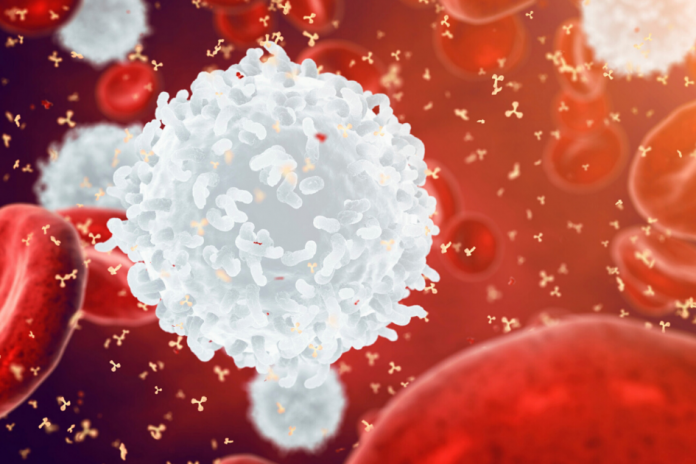Blood is the fluid-like medium circulating in our body and transfers oxygen and essential nutrients to our body cells. Our blood is predominantly composed of plasma, and three kinds of cells circulate within blood plasma. In this article, you will know about elevated white blood cells.
The blood cells consist of three types as Red blood cells, white blood cells and platelets. Red blood cells are the most crucial cells in our blood and play various essential rules like help in transporting oxygen and a small number of other gases. Platelets are not cells. These are cell-like bodies that help in blood clotting. White blood cells are without any pigment and help to fight against the disease. WBCs works as a defender in our body.
Please scroll down to know about white blood cells and how the elevation of WBCS creates a disturbance, and please scroll down.
Table of Contents
What are white blood cells?
The second name for white blood cells is leucocytes or white corpuscles. White blood cells are 7000 to 8000 per cubic millimetre of blood. WBCs are much larger than red blood cells. White blood cells are colourless because they don’t contain the pigment haemoglobin. WBCs are playing an essential part in immunity and can fight against disease and infections.
Types of white blood cells
Various types of division can fulfil the role of white blood cells in our body. These are of two kinds of white blood cells describe below:
- Granulocytes (it is named so because it contains granules which in turn composed of protein)
- A-granulocytes (it is named so because it doesn’t contain visible granules so, the nucleus is visible in these cells)
Granulocytes and A-granulocytes are further classified into subgroups to understand much better about white blood cells.
Granulocytes have three subcategories
- Neutrophil (constitute 62% of WBCS and helps destroy small particles by phagocytosis)
- Eosinophil (constitute 2% of WBCS, and it inactivates inflammation-producing substances, attacks parasites)
- Basophil (constitute less than 1% of WBCS and release heparin to prevent blood clots and histamine from preventing inflammation)
A-granulocytes also have two sub-divisions as discuss below:
- Monocytes (makeup 3% of WBCS and give rises to macrophages which in turn destroy larger particles by phagocytosis)
- Lymphocytes (makeup 32% of WBCs and help in the production of antibodies for immune defence)
Why is the level of WBCS essential?
White blood cells level shows the normality and natural health of a person. When the level of white blood cells varies slightly, it doesn’t cause much disturbance. Still, a valuable change in WBCS disturbs tan individuals daily life decrease, or elevation in WBCS level causes trouble in the normal functioning of a human being.
How white blood cells produce?
White blood cells start producing from bone marrow as WBCS have a short life approximately about two to three days. So, new WBCS form after this duration. WBCS grows in the following places of body:
- Thymus
- Spleen
- Lymph nodes
- Blood vessels
- Tonsils
- Adenoids
If the excess of WBCS produces, then it causes elevated white blood cells which cause serious complication.
Let’s discuss elevated white blood cells.
Average WBCS level at different ages
This article will indeed cover the average level of WBCS in every stage of life. To know all about the expected level of WBCS and its count, please scroll down.
Level of white blood cells according to age describes below:
| Newborn white blood cells count | Ranging from 9000 to 30,000 WBCS per µl blood |
| Child under two | Ranging from 6200 to 17000 per µl blood |
| The child over two and adults | Ranging from 5000 to 10,000 per µl blood |
| Female WBCS count | Ranging from 4500 to 11,000 per µl blood |
| Male WBCS count | Ranging from 5,000 to 10,000 per µl blood |
| Old people WBCS count | Variable |
How to about the level of WBCS is human?
One of the easiest ways to about the level of white blood cells is WBCs count.
WBCs count is a sort of blood test to measure the level of WBCs in the bloodstream. If the WBCs level range from 45000 to 11000, it shows an average WBCs level in blood. The group is less than 45000, it explains that the patient has the deficiency of WBCs. If the level of WBCs exceeds 11000, it shows that you are suffering from elevated WBCs level.
If you want to get more about elevated WBCs level in the bloodstream, scroll down more.
Causes for elevated WBCs level in the blood
Here’s I discuss the following conditions and reasons which causes elevated WBCs:
Viral infection:
- Viral infection causes the immunity to becoming faster, which causes an elevation in WBCs in the bone marrow to fight against the virus.
Excessive physical and emotional stress:
- Sometimes, our body has to face conditions like stress, depression, anxiety etc. This information results in the production of cortisol in the blood, which increases inflammation. As a result, the level of WBCs elevated.
Immune system disorders:
- As WBCs are responsible for immunity response. Any disturbance in the immune system and immune system disorders (multiple sclerosis, psoriasis, inflammatory bowel disease) can cause elevated WBCs.
Splenectomy:
- The spleen plays an essential role in immunity. When a person removes spleen, there is more risk of infection, which elevates the WBCs level.
Bacterial inflammation:
- Bacterial inflammation demand more immunity and in turn increase in WBCs
Genetic disorder:
- When there is a defection inpatient gene that controls the production of WBCs, it causes elevation or decrease in WBCs.
Certain drugs or smoking:
- Some medicines like albuterol, heparin, and epinephrine cause elevated WBCs. Elevated white blood cells are commonly caused by cigarette smoking, which causes inflammation in the lungs and air passages. As you gain more inflammation in your lungs and airways, your body will produce more white blood cells to fight it off.
Tissue damage:
- When tissue gets damage, WBCs leaves the blood vessels and enters the tissue. This process may lead to a detailed elevation of white blood cells.
Bone marrow disorders:
- As WBCs produce in the bone marrow. A slight infection or disease in bone marrow causes elevation of WBCs.
Tuberculosis:
- TB caused by bacteria (mycobacterium tuberculosis) so, bacterial infection increase WBCs
Symptoms and diagnosis of elevated WBCs
There are no such prominent symptoms for the rising level of WBCs, but you should check your average blood concentration by WBCs count. However, people with high WBCs have symptoms:
- Fainting
- General pain
- Bruising and bleeding
- Breathing and gasping by allergic reactions in your lungs
- Fever
Benefits of elevated white blood cells
Sometimes, an elevated level of WBCs proves beneficial. For example, a person suffering from a low level of WBCs, and he/she needs to raise the level of WBCs.
The problem of elevated level of white blood cells
Someone has said very well that excess of everything is terrible. This quote perfectly suitable for my article. Here we’ll discuss the issues and diseases that arise due to the increased level of white blood cells in the blood.
1-Leukemia:
Leukaemia is the result of uncontrolled production of white blood cells. The reason behind the elevated level of WBCs is that melanocytes (bone marrow cells) start spreading throughout the body, which gives rise to the high level of WBCs. Sometimes, leukaemia may be due to neutrophils, eosinophils and basophils. Neutrophilic leukocytosis is a disease caused by an increased level of neutrophils. It most commonly caused by infection and hypoxic tissues damage. Eosinophils leukocytes disorders are less, and basophils diseases are rare among people.
Symptoms of leukaemia include:
- chills or fever
- Persistent weakness
- Swollen lymph nodes typically at neck or groin
- Recurrent nose bleeds
- Tiny red spots on your skin
- Bone pain or tenderness
- Excessive sweating especially at night
- Losing weight without trying
- Prolonged erection and stroke
Leukaemia is one of the prevalent disorder due to rise level of white blood cells. It is a severe disease. The following primary causes cause leukaemia:
- Genetic predisposition.
- Use of certain hair dyes
- Drugs and medicines addiction
- Expose to petrochemicals like benzene
- Extensive exposure to ionizing radiations
Medical treatments can help in the treatment of leukaemia. Leukaemia is the cancer of white blood cells. Here is the treatment
- Bone marrow transplant
- Radiation therapy
- Consolidation
- Stem cell therapy
- Stem cell transplantation
- Chemotherapy
- Chimeric antigen receptor (CAR) T-cell treatment
- Intravenous injections of immunoglobulins
- Sometimes, a patient needs to change the blood with regular blood, got from the donor
2-Thyroid problems
Hypothyroidism is one of the common diseases caused by a high level of WBCs. One of the leading cause of hypothyroidism is an auto-immune response in which the body produces more white blood cells, which has more antibodies even if it can destroy its tissues.
Its symptoms include:
- Constipation
- Depression
- Slow movement and thoughts
- Being sensitive to cold
- Muscle cramps
Causes for hypothyroidism:
- Damage to the pituitary gland
- Too much or too little iodine
- Thyroiditis
- Radiation treatment
- Excess intake of medicines
- After surgical removal of the thyroid gland
Treatment for hypothyroidism:
Ensures daily use of hormone LEVO-THYROXINE for the treatment of hypothyroidism
Elevated WBCs characterize 3-Pyuria
Pyuria is mainly due to the increased level of a white blood cell. Doctors can define pyuria patients as his/her blood contain at least ten white blood cells per cubic millimetre. Pyuria can cause the urine to become cloudy due to high level of pus.
Causes for pyuria:
- Entry of parasites
- Elevated WBCs level due to infection
- Urinary tract infection
- Kidney disease
- Urinary tract stones
- Bacteria with sepsis
Now we’ll discuss the symptoms of pyuria, please scroll down
- Foul-smelling urine
- Frequent urging urination
- Abdominal pain
- Nausea and vomiting
- Burning sensation when urinating
- Cloudy urine
Treatment of pyuria which in turn due to a high level of white blood cells. We can also treat it with antibiotic therapy like
- Ampicillin
- Doxycycline
- Minocycline
- Levofloxacin
Doctors also advise the patient to eat health-friendly food that normalizes the blood stream’s white blood cells.
Food that normalizes the elevated White Blood Cells level
Some foodstuff helps the patients treat elevated WBCs level and prevent you from disturbing white blood cells’ level.
Eating vitamin C and E rich food helps to maintain the level of WBCs. Vitamin C and E rich fruits are:
- Lemons
- Oranges
- Papaya
- Guava
- Pineapple
- Black currants
- Strawberry
- Kiwifruit
- Mango
- Avocado
- Blackberries
- Olives
- Tangerines
You can also get vitamin C and E from vegetables like:
- Carrots
- Bell pepper
- Cauliflower
- Broccoli
- Tomatoes and tomatoes juice
- Winter squash
- Green leafy vegetables
- Sweet and white potatoes
- Beet greens
- Turnip greens
- Butternut squash
- Garlic
- Ginger
These are natural ingredients that lower the level of elevated WBCs and help you get rid of high-level WBCs as much as possible.
Some other foodstuff is also useful:
- Nuts
- Peanuts
- Green tea
- Almonds
- Yoghurt
- Olive oil
- Sunflower seeds
- Shellfish
- Turmeric
The patient should eat these foods and add this material in his/her daily diet routine. Anti-oxidant also be used for the treatment of elevated WBCs.
Prevention to get rid of an elevated level of white blood cells
You should avoid sugar-rich foods in your diet and replace your previous diet with the food, and I listed above in the article.
Final verdict
All the above Content reveals information about elevated white blood cells. If you have any query related to elevated white blood cells, you can clear from this article.















